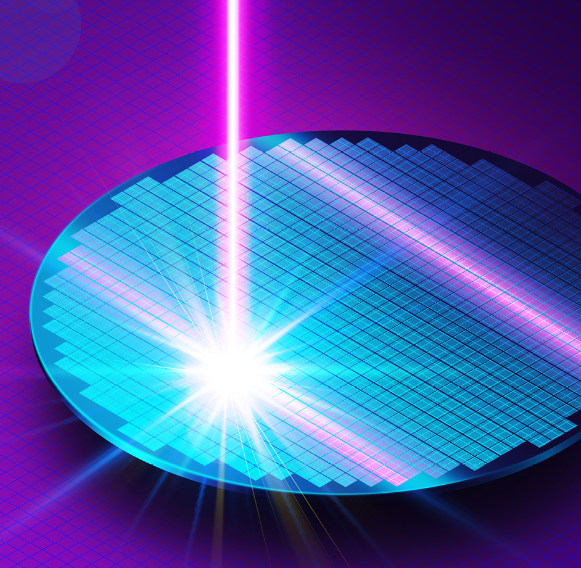The quality of photolithography has a great impact on the performance of the product and is one of the key factors affecting the yield rate. With the rapid development of high-density dot matrix liquid crystal displays and active matrix liquid crystal displays, the graphics on the display screen are becoming more and more complex and the precision is getting higher and higher, and photolithography technology becomes more and more important. The most commonly used photolithography method in production is the contact exposure method.

1) Glue coating
Glue coating is the first process of photolithography, which is to apply a layer of photoresist on the surface of IT0 glass. The control of glue coating directly affects the quality of photolithography. Therefore, the photoresist should be prepared as required during operation, and the coating thickness, uniformity and surface state of the photoresist should be controlled.
Glue coating methods include dip coating, spin coating, roller coating, etc. Among them, the coating quality of roller coating is better than the other two. It is to evenly apply the photoresist on the glass through a rubber roller. In order to ensure the quality of the film, the glue coating process should be carried out under clean conditions, the temperature is 22+3℃, the humidity is less than 60%, and the operation is carried out under yellow light conditions without ultraviolet light.
Photoresist is generally stored under low temperature and light-proof conditions. Therefore, before using the photoresist, the glue must be taken out of the low temperature condition and placed at the use site until the temperature of the glue in the bottle is the same as the ambient temperature before opening the bottle cap.
The performance of photoresist is related to the ratio of photoresist. The principle of photoresist ratio is that the photoresist should have good corrosion resistance and high resolution. However, they are often contradictory and cannot be achieved at the same time. Therefore, different ratios must be selected according to different photolithography objects and requirements. Since the amount of solvent used in the photoresist determines the thickness of the photoresist, it affects the thickness of the photoresist. When a thinner photoresist is used, the prepared photoresist film is relatively thin, the scattering and diffraction of light are weaker, and the photolithographic pattern is clear and the edges are neat. When a thicker photoresist is used, the prepared photoresist film is relatively thick and can be used to etch a thicker ITO layer.
The preparation of photoresist should be carried out under red or yellow light in a dark room with high cleanliness. Use a measuring cylinder to measure the original glue and solvent according to the formula ratio, then pour the solvent into the original glue, and stir them thoroughly with a glass rod to mix them. In order to reduce the solid content in the glue solution, improve the contact between the glue film and the mask to reduce the pinholes of the glue film and improve the resolution, the solid impurity particles that cannot be dissolved in the prepared photoresist must be filtered out. The commonly used methods are pressurization method, suction method, and natural dripping method. In addition, natural precipitation or high-speed centrifugal precipitation can also be used for filtration. The filtered photoresist should be placed in a dark glass bottle and stored in a cool and dry dark box.
The surface condition of the TT0 glass before coating has a great influence on the adhesion quality of the photoresist and the ITO layer. In production, in order to ensure good contact and adhesion between the TT0 and the photoresist, the cleaned glass is activated by ultraviolet light, and then the photoresist is coated.
The quality requirements for glue coating are as follows:
> The glue should adhere well to TO and there should be no glue falling off
> The coating thickness should be uniform and consistent, and there should be no thick or thin layers, otherwise there will be graphic defects during development and etching. > The surface of the coating should not have defects such as stripes, pinholes, protrusions, etc.
2) Pre-baking
The purpose of pre-baking is to promote the full volatilization of the solvent in the film, dry the film to increase the adhesion between the film and the IO surface and the wear resistance of the film. During exposure, the mask and the photoresist will not damage the photoresist film or contaminate the mask even if they are in contact. At the same time, only when the photoresist is dry can the photochemical reaction be fully carried out during exposure.
There are currently two commonly used pre-baking methods: one is drying in a constant temperature drying oven; the other is drying in an infrared oven. The former uses electric heating wire to heat to a certain temperature, so that the photoresist gradually dries from the outside to the inside, and the drying time is longer; the latter uses infrared light radiation, and the drying of the photoresist starts from the interface between the film and the IO layer and gradually evaporates the solvent outward. Its drying effect is better than the former and the time is shorter.
The main factors affecting the quality of pre-baking are drying temperature and drying time. When the film is not baked enough (the temperature is too low or the time is too short), the solvent in the film is not fully evaporated. During exposure and development, the unexposed parts are also dissolved to form floating glue or cause the pattern to deform. When the film is baked for too long or the temperature is too high, it will cause the film to warp and harden, and the pattern will not appear during development or the pattern will have a base film left.
3) Exposure
Exposure is to cover the glass surface coated with photoresist with a mask, and selectively irradiate with ultraviolet light to cause a chemical reaction in the photoresist of the illuminated part, changing the solubility of this part of the film in the developer. After development, the photoresist film shows a pattern corresponding to the mask.
The general exposure operation process is to turn on the ultraviolet lamp of the exposure machine for preheating, wait for the power to stabilize, and place the photoresist on the frame for initial alignment under a microscope. Put the frame pattern face down on the exposure machine frame, take a piece of glass coated with photoresist, put it on the exposure platform with the glue face up, and position it with positioning pins. Exposure is done for experiments, and the exposed glass is taken out after development. The alignment accuracy of the glass and the plate is checked under a microscope. If it does not meet the requirements, the alignment pins of the platform are adjusted to make the alignment mark of the plate meet the requirements.
The exposure time and exposure intensity are determined based on factors such as the quality of the plate, the properties of the photoresist, the strength of the light source, and the distance from the light source to the TTO glass. Generally, a test piece is made and the pattern effect is checked after development before the exposure conditions are determined. If the exposure time is too short, the photoresist will not be sensitive enough, its chemical reaction will be insufficient, the illuminated part will not be completely dissolved during development, and the base film will easily remain. If the exposure time is too long, the edges of the parts that should not be exposed will also be weakly sensitive to light, the boundaries of the graphics will be blurred after etching, and the fine lines will be severely deformed.
4) Development
Development is to dissolve the photoresist in the photosensitive part, leaving the film of the unexposed part to display the required pattern.
The development process is to put the exposed glass into the development tank, and the developer is sprayed on the photoresist surface of the glass through a swinging nozzle. After a certain period of time, the pattern is displayed, and the glass is washed with water to wash away the developer.
The time and temperature must be controlled during development. The temperature and time directly affect the development speed. If the development time is insufficient or the temperature is low, the photoresist in the photosensitive part cannot be completely dissolved, leaving a layer of photoresist. During etching, this layer of glue will protect the 0 film, so that the ITO that should be etched is protected. If the development time is too long or the temperature is too high, the photoresist that is not exposed during development will be drilled inward from the edge, making the edge of the pattern worse. In severe cases, large pieces of photoresist will peel off and form debonding.
5) Hardening of the film
During development, the photoresist film softens and expands, which affects the film's corrosion resistance. Therefore, after development, the glass must be baked at an appropriate temperature to remove moisture and enhance the adhesion between the film and the glass. This process is called hardening of the film. There are two ways to harden the film: one is to use an oven to harden the film; the other is to use infrared light to harden the film.
6) Etching
Etching is to use a certain proportion of acid to corrode the ITO film on the glass that is not protected by the photoresist, while preserving the ITO film protected by the photoresist, and finally forming an ITO pattern.
The selected etching solution must be able to corrode the ITO glue without damaging the glass surface and the photoresist. Generally, a mixture of HCI, HNO, and water in a certain proportion is selected.
The etching temperature and time have a great influence on the etching effect, and the change of the two also affects the etching speed. Generally, the etching temperature is constant, and the etching effect is adjusted by time. The etching time should be determined by the etching speed and the thickness of the ITO film. The thicker the ITO film, the longer the etching time.
7) De-filming and cleaning

De-filming is to rinse with alkali solution and scrub the glass with a roller brush under certain temperature conditions to ensure that the residual glue on the glass is completely removed while scrubbing the glass with a roller brush. Finally, use high-purity water to rinse the residual alkali solution and residual glue on the glass.







 Search
Search





